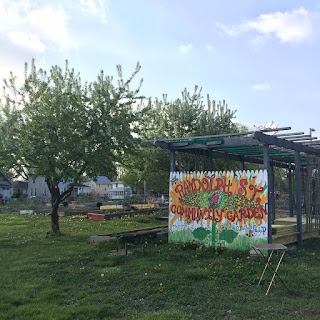The Randolph Community Gardens is a space filled with opportunity, hope and growth.
As spring begins to fade away with unpredictable temperatures, Mother Dawn prepares the space for cultivation. Cultivation of not just the flowers, herbs, vegetables and fruits, but also of the youth, the working class, the poor and the elderly. A space where all members of the community can come and share in the beautiful nature of its essence.
Friday April 8th 2016
The day was cool with mild winds,
I took a stroll into the community gardens...
New spaces provide new opportunities for community members to feel welcome, feel loved and do what they love to do.... grow their food, grow food for others and grow together.
Saturday April 23 2016
While the weather has warmed a bit,
I went back to the gardens to seek human interaction.....
However, I must have missed everyone,
although no one was there,
they left the evidence of their fun!
And new spaces for more inspiration!
While the weather here in central Illinois is finally at a point of fun in the sun and rainy days perfect for cultivation,
I shall continue to seek my own community integration...



















